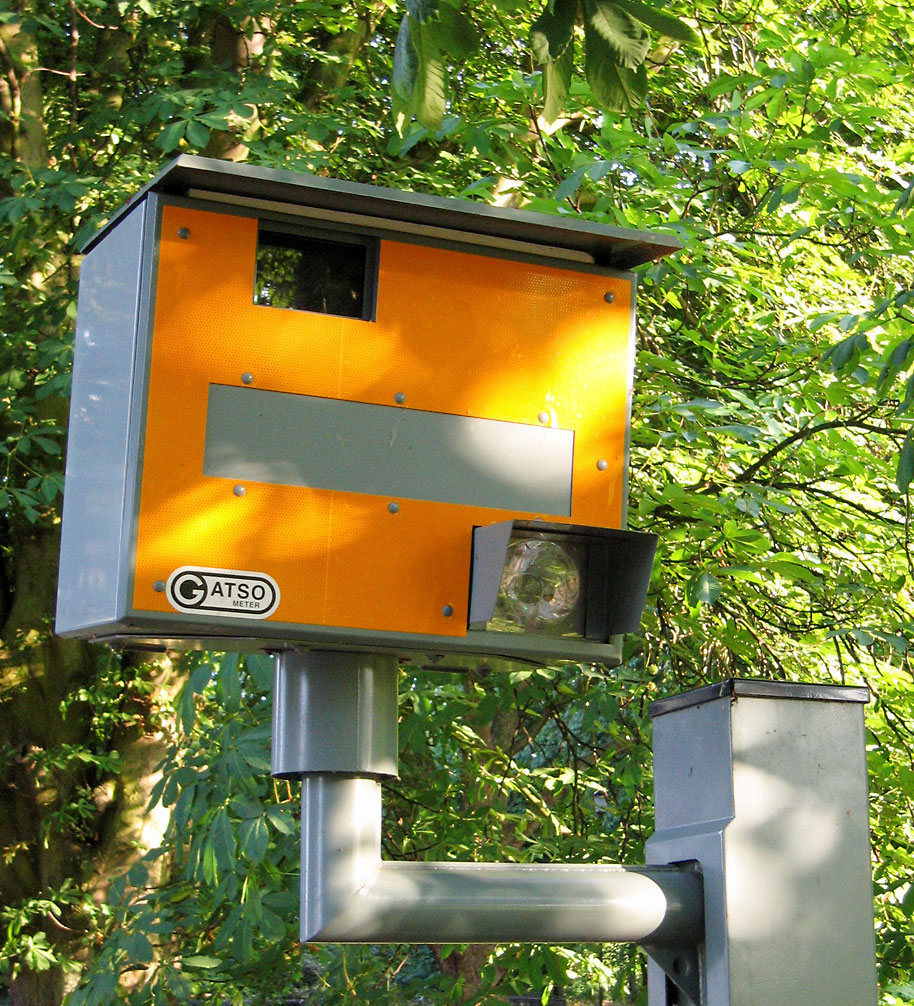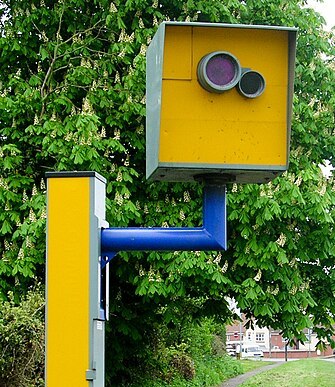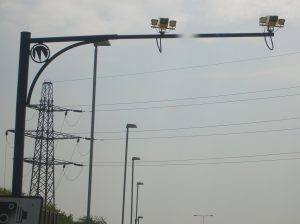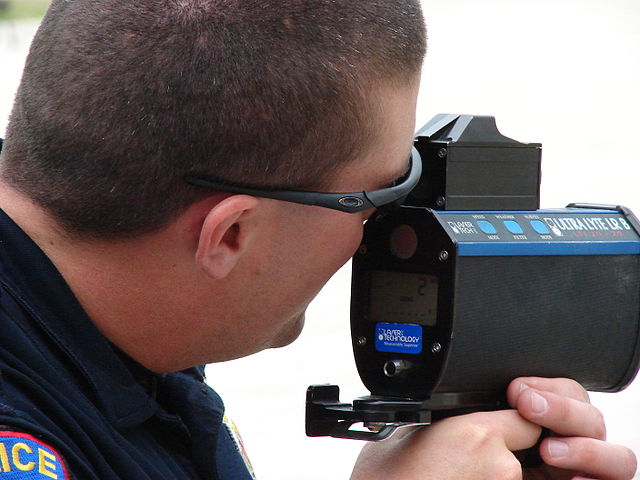The UK authorities just love speed cameras. There are around 7,000 surveilling our roads – the fourth largest number in the world. They come in a bewildering variety of shapes. too, with no fewer than 18 different types ready to record your transgressions. In this post, we’ll meet five of the most common ones, with all the deets on how they work and what they can capture. Let’s go!
1. Digital Gatso.

Appearance: Imagine a speed camera. Boom, you’ve got it, because the Gatso is the thing everyone associates with speed cameras. It’s the UK speed camera daddy, that huge, square, menacing box of doom.
How they work: The Gatso uses radar to measure your car’s speed. If you’re sufficiently over the limit, it activates a camera that flashes twice, capturing the rear registration plate. The Gatso always appears in conjunction with white lines and is usually rear facing – in other words, it snaps you after you’ve driven past it.
Extra details: Gatsos have been around since 1991, but didn’t go digital until 2007. Before that, each contained a tiny policeman equipped with a Polaroid and a notebook. Some Gatso units will flash when you’re over the limit, but don’t record your data, so you got a scare for nothing (except it might slow you down). Operators have also turned them around to catch you approaching on the opposite side of the road – the sneaky so-and-so’s!
2. Truvelo Combi Speed Camera.

Appearance: Like a 1950s home movie camera used by German naturists to record their frolics.
How they work: This is a forward-facing camera that uses piezo sensors in the road to calculate your speed. If excessive, this triggers the infra-red camera, which records an image without an accompanying flash. White lines on the road act as an additional check should the driver dispute the camera’s data.
Extra details: Despite sounding like a model of boiler, or type of caravan, the Truvelo Combi is a considerable upgrade from the Gatso. For a start, it doesn’t produce a blinding nuclear flash, which was always a bit counterproductive to the road safety effort. Secondly, it captures the driver’s face, putting an end to the traditional it-wasn’t-me-guv defence.
3. Truvelo D-Cam.
Appearance: No pic for this one, but imagine a neo-classical arched cathedral window in which the top element is a rose window, set in the bottom half of a long narrow box. Got that?
How they work: To detect your speed, Truvelo D-Cams either use piezo sensors embedded in the road or bounce a laser beam off the vehicle. These trigger the infra-red camera, which again records without needing a flash.
Extra details: The Truvelo D-Cam’s capabilities are scary: they can face forward or backward, monitor three lanes of traffic simultaneously, and either instantaneously send images back to the police, or store 100,000. Oh, and they can be used to monitor whether you’ve jumped a red light too.
4. SPECS Average Speed Camera.

Appearance: The originals look like a central camera flanked by two toasters. However, they’re usually so far up on an overhead gantry that you can’t look at them properly without crashing.
How they work: SPECS systems use a minimum of two linked camera installations. As your vehicle passes the first infra-red camera, Automatic Number Plate Recognition (ANPR) software registers your number plate. This happens again when you pass the paired camera. The software then calculates the time it’s taken to travel the distance between them.
Extra details: These have been on British roads since 1999. According to speedcamerasuk.com, the longest average speed checked stretch of road is the A9 between Dunblane and Inverness, which offers 99 miles of checking your speedo.
Motorbikes have no front number plate to record, but more recent SPECS 3 cameras can record rear numberplates too. And the old myth about changing lanes to avoid detection is just that – a myth.
5. Handheld Speed Guns.

Appearance: Various. Some resemble oversize Star Trek phasers, some are more like hairdryers (enough to allow some people use actual hairdryers to imitate speed guns), some look like strange power tools. Wielded by burly police personnel or enthusiastic pensioners.
How they work: The gun bounces several hundred pulses of laser light off your vehicle. According to Wikipedia: “… readings are taken over a period less than half a second and used to estimate the change in distance over time, thereby estimating vehicle speed.” The camera technology records not only the number plate, but also the vehicle make and model.
Extra details: The newest models cost an arm and a leg, about £10K to be precise, but they are pretty sophisticated. They can record up to 750m away, so you’ll be doing well to spot one before it spots you. And they can not only be used to do you for speeding, but also not wearing a seatbelt, tailgating, using your phone while driving… and probably for having too much salt on your dinner.
Are speed cameras effective?
Advocates certainly think so, but there’s always been a steady grumbling that they do nothing but gather revenue from motorists. That’s not one we can unravel in a few words – sounds like a future blog post.
The WVS blog covers a wide range of automotive topics, from the contentious to the light-hearted. We are an independent garage specialising in all the VW group marques, including Audi, Volkswagen, Skoda and SEAT. WVS provides services, repairs and MOTs, delivering a main dealer level of care at affordable prices. To book your vehicle in, or for any enquiries, get in touch.
